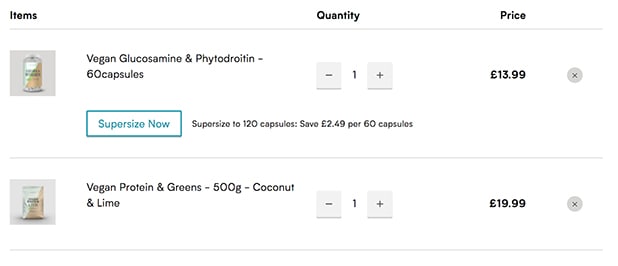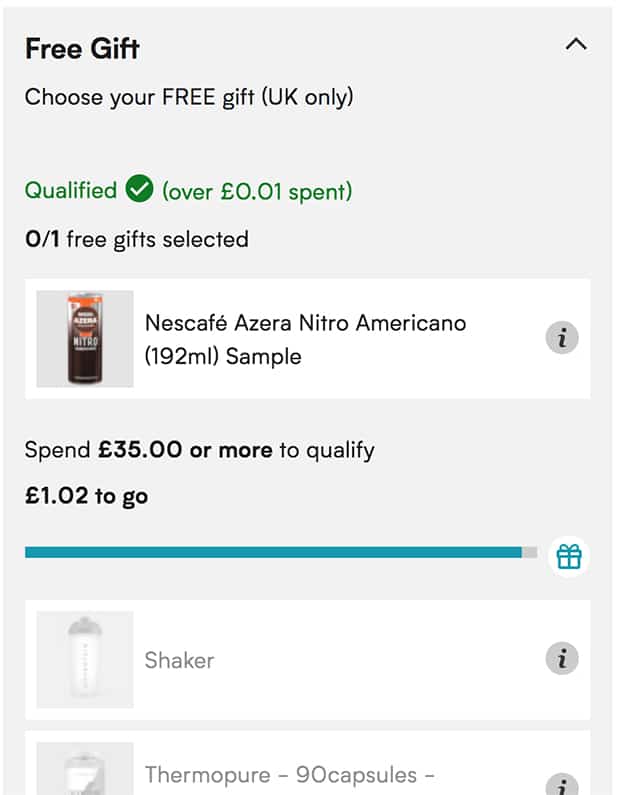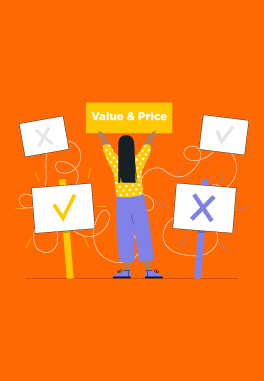Estimated reading time: 4 minutes
Table of contents
Returning customers account for 40% of the US revenue. Their numbers are small, but they are more profitable than one-time shoppers. Top-performing marketers work hard to keep customers loyal to their store, and basket-based pricing strategy works well for that purpose. Let’s learn how it works.
What is basket-based pricing
Basket-based pricing is a strategy to entice customers to buy more via personalized offers when someone is about to make a purchase.
Retailers know by heart the importance of increasing the basket size now, instead of selling piece by piece over time. Here are the reasons why:
- You don’t want the customer to buy it somewhere else.
- The customer may give up on the product altogether.
- You don’t want to postpone a purchase. You want your customers to buy now as well as later.
How can we increase basket size? Surely by giving customers what they want.
The thing about today’s shoppers is that they care for a personalized shopping experience so much that 63% of US shoppers are willing to share personal data for it. Basket-based pricing strategy takes advantage of this tendency. Let’s take a look at how others implement it.
Amazon’s basket-based pricing strategy
When it comes to basket-based strategies, Amazon is a go-to-resource. The company personalized the shopping experience on Amazon.com, and now they sell this technology to other businesses.
The retail giant’s AWS (Amazon Web Services) offers businesses real-time personalized product recommendations, e-mails, and content.
One personalization technique Amazon uses on Amazon.com is the add-on feature.

They use this strategy on low-priced products to encourage more sales.
MyProtein’s basket-based pricing strategy
MyProtein is a health and supplement e-commerce store that sells a range of products. One great strategy they use is to ask whether or not you want to supersize one of your products.

This smooth customer experience is brilliant for keeping people within the checkout page and increasing the likelihood of an additional purchase.
Below, we’re able to see that if we spend £35.00 more, we qualify for a free gift. If this is your first experience with MyProtein, then a free gift sounds like a great idea.

This encourages people to head back into the category and product pages in order to claim the free gift.
Advantages
- In the short run, it can drastically increase the basket size.
- With the impact of personalized shopping experience and great deals, which make customers feel special and cared for, you’ll build a loyalty relationship with your return customers.
Disadvantages
- Data collection and analysis takes too much time if you don’t have the expertise and the necessary tools.
How to implement it
- Combine real-time data and purchasing history to anticipate which product recommendations would attract an individual.
- Analyze purchasing history and find out which sales campaigns and discounts prompted the shopper to buy in the past.
- Benefit from marketing automation platforms/tools. Instead of devoting your limited resources to data collection and analysis, spend your time on C-level decision-making.
Final thoughts
Basket-based pricing is a great strategy to build a personal relationship with your customers and increase your basket size.
By taking an intelligence-first approach, you can learn more about your customers but more importantly, learn more about the ways to keep them happy.



Leave a Reply